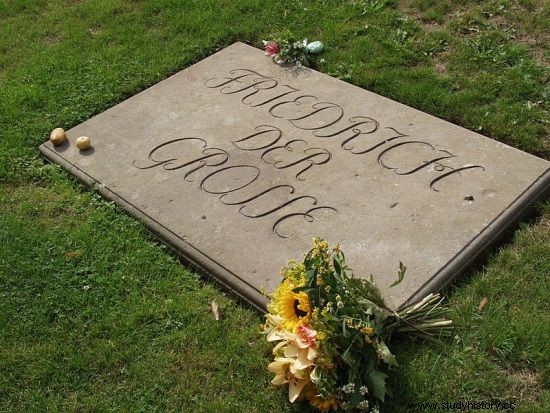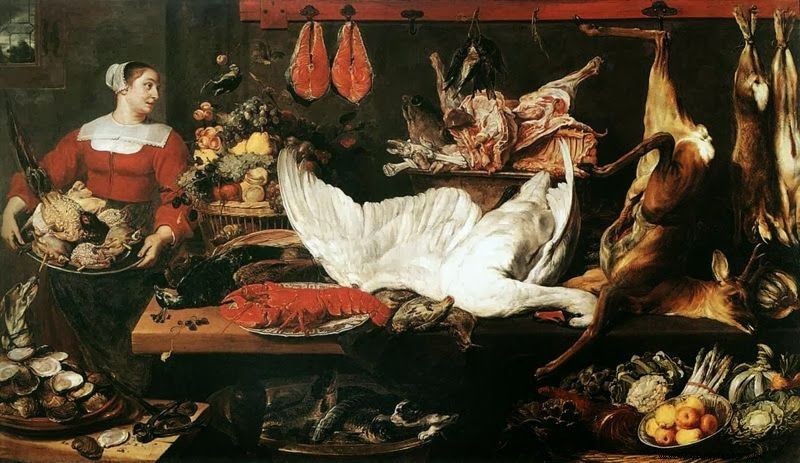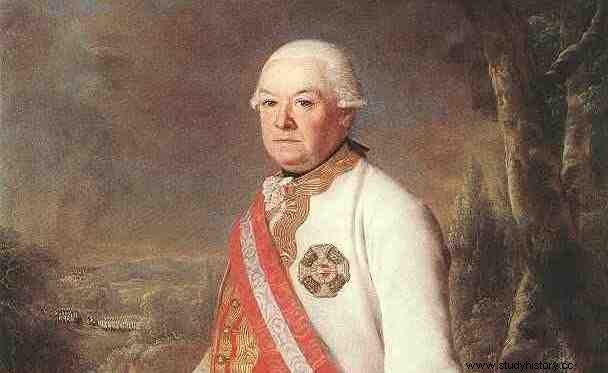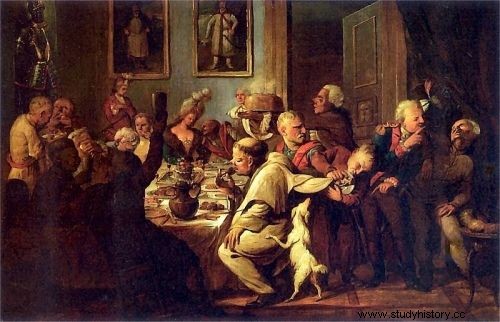Do you think that the 18th century is just powder, huge wigs and angels with golden bottoms? You are wrong! Rediscover the age of enlightenment:free love, dog cemeteries, the youngest grandfather you've ever heard of, unbridled gluttony, gallons of vodka and a sea of blood.
As always, all TOP10 items are based on the articles we publish. This time, we present ten reasons why the 18th century will become your favorite era!
10. An uncomfortable sex with a pig herd? Anything was possible at the masked party
The countess is flirting with the shoemaker and the prince beats the washerwoman in the dance? Everyone is having a great time hiding their identity under various masks, and someone asks you to pay a fee at the entrance to a brightly lit hall, full of music? This is a sign that you have come to a redoubt, or a masked ball!

Who is the butler and who is you? Who will guess if they are both dressed up as a monk!
Masquerade balls, commonly known as redoubts, were public masked games that were first organized in the Polish-Lithuanian Commonwealth during the reign of Augustus the Strong. Anyone who has paid the appropriate fee, regardless of origin, could participate in them. Only here, among the dancers hidden behind disguises, did all state differences disappear, and music, dancing, alcohol, gambling and romance were indispensable elements of the fun (read more on this topic).
9. There were dog cemeteries in 18th century Europe!
Animal cemeteries seem to be a modern invention. There are only a few of them in Poland, and they still arouse controversy. Their opponents say it is a modern fashion and an idea of American yuppies. Nothing could be more wrong!

The tombstone of Frederick II is located near the Royal Dog Cemetery (author:Hannes Grobe; Creative Commons CC-BY-SA-2.5)
Prussian King Frederick II the Great loved his dogs so much that he created a gallery of portraits of royal greyhounds and a cemetery for these very quadrupeds, each with their own marble tombstone . Interestingly, Frederick II himself was laid to rest near the animal necropolis after his death (read more about this).
8. Louis XV became a grandfather at the age of 31
Louis XV she is remembered mainly for her romance with Mrs. Pompadour and her marriage to a Polish woman. However, this ruler held the record in a completely different field. At 31 when many men are just starting to think about marrying, he was already a grandfather!

12-year-old Louis XV waiting for the woman of his life. Alexis Simon Belle, Portrait of Louis XV (source:public domain).
The successor of the sun king became monarch at the age of five. Louis became engaged at the age of eleven to a three-year-old Spanish infanta, brought to Versailles. Two years later it was decided that it was necessary to hurry up with the extension of the royal family, and the search for a mature candidate for a wife who would be able to give birth immediately began. The king became a father at the age of seventeen. He also didn't have to wait long for his grandchildren… (read more about it).
7. In the 18th century, the rich man's table on Christmas Eve could contain up to 25 dishes
The Saxon times were of great importance for the development of the Polish Christmas custom. It was then that Christmas Eve began to be solemnly celebrated. Poles, refreshed after Advent days, waited impatiently to sit down at the lavishly set table.

The magnate's pantries must have looked similar before Christmas Eve (Frans Snyders' painting "Pantry", source:public domain).
In the 18th century, twelve dishes were not eaten because there was a superstition that the number of dishes should be odd. Magnates consumed eleven or thirteen pans, but that's not all! There were also twelve fish dishes on your tables:twenty-five in all. Too much? Of course not! It is a piece of cake for the wealthy of the Republic of Poland. The rich eaten so abundantly on a daily basis that they were prepared for the holidays like athletes for a competition (read more on this topic).
This article has more than one page. Please select another one below to continue reading.Attention! You are not on the first page of the article. If you want to read from the beginning click here.
6. Polish peasants almost killed King Charles XII of Sweden
Half a century after the devastating "flood", the Republic of Poland again experienced Swedish violence. Poland became the arena of the Third Northern War. Charles XII, the ambitious king of the Swedes, Goths and Wends, had just humiliated Saxony and marched on Russia with the intention of dethroning Tsar Peter I.
Both sides of the conflict decided to wage total war. The area along the Polish-Russian border has become a veritable death zone, deprived of both food and population. Charles XII said bluntly:his army must have nothing short of nothing, and the country that feeds it can suffer as much as it wants .

The Battle of Poltava was the most important clash of the Northern War. Pierre-Denis Martin, "The Battle of Poltava" (source:public domain).
The peasants tried to hide their supplies, but the soldiers took them by force. The Swedes joined in soon. The people began to organize guerrillas. The Kurpie people took their toll the most:in one of the skirmishes in the Green Forest, King Charles himself came close to death! It is known:if Kurp is stubborn, "crap, kill!" (read more about it).
5. Tsarina Katarzyna saved the Jesuits
Jesuits, like no other, contributed to the development of the Catholic Church through evangelization and missionary activity. Fathers unscrupulously converted pagans, fought the Reformation, and exterminated "Orthodox schismatics." Overall, they served the cause as much as they could. What their surprise must have been when on July 21, 1773 Pope Clement XIV ordered the dissolution of the order ...

Oppressor of the Polish Nation and protector of the Jesuits in one. Can be? Can be! Fyodor Rokotow according to Alexander Roslin, Portrait of Catherine the Great (source:public domain).
Thus, in all the countries of Europe, the Society of Jesus ceased to exist. Everyone except Russia. Why did the Jesuits only survive in the Orthodox monarchy? Catherine meant Poland ... (read more about it).
4. The Polish magnate went to prison with one wife and left with two
Prince Marcin Lubomirski was an extraordinary man:a general and a prisoner, a hero and a traitor, a bigamist, a Frankist, a sharp and a freemason. He deserved most of these terms by the time he was thirty. He fought in three armies, he had five wives, and all of Warsaw danced at his balls ...
Marcin Lubomirski, cursed by his family, made a living serving in foreign armies. A mercenary, like a mercenary, served mammon by changing sides of the conflict. His troops prowled the territory of hostilities and engaged in robbery. In the end, the measuring cup changed and Lubomirski was captured by the Crown troops.

The commander of the fortress in Buda, Andrzej Hadik. Instead of keeping an eye on Lubomirski - he made him his son-in-law ... (a painting by Johann Georg Weikert, public domain).
The list of accusations was long: Kidnapping a noble woman, desertion, joining a foreign army, robbing merchants, killing one of them ... The prince ended up in a fortress, and his wife was locked up in a monastery. When he got out of prison, it turned out that he was imprisoned with one wife, and released as a bigamist ... in addition, the daughter of the commander of the fortress in which he was imprisoned became the second wife (read more about this).
3. Casanova almost killed the future citizen of Targovice in a duel
The famous Venetian lover came to Warsaw in 1765. Casanova had plans to avoid fights in a different way than usual, and at first he was doing well. He quickly found himself at the royal court, where he took up a quiet and well-paid office job. It was unfortunate that he met Anna Binetti in Warsaw, whom he seduced when she was still a teenage daughter of a gondolier in Italy.

18th-century duel revolvers (photo:Nfutvol, license CC ASA 3.0).
However, a lot has changed since then - the girl became one of the most famous ballerinas in Warsaw, and above all the mistress of the famous violent, Count Franciszek Ksawery Branicki ... Perhaps the Venetian could avoid a quarrel with the magnate, had he not uttered one ironic sentence too many . S luckily, no one was killed in the duel, although both gentlemen suffered a health impairment (read more on this topic).
This article has more than one page. Please select another one below to continue reading.Attention! You are not on the first page of the article. If you want to read from the beginning click here.
2. Poles in the 18th century drank alcohol from the very morning
A well-known cliche says: "Eat, drink and drop your belt in the time of King Sas." There is no exaggeration in these words. In the decline of the Polish nobility, sumptuous feasts were held day after day, and people drank so much that many hungover noblemen ... might not have noticed the partitions at all.

An 18th-century feast at the Radziwiłł court. The booze is pouring in streams…
Magnates in the Saxon times drank about twenty liters of vodka and over seven hundred liters of beer per year per head . Beer was drunk from breakfast, moreover, often a glass of vodka was an addition to the morning meal. Later it was only better ... as one foreign traveler wrote: The most aristocratic Poles take it [vodka] with them in their boxes and have to drink it almost every hour (read more about it).
1. In eighteenth-century France, a werewolf raged!
The Gevaudan monster, famous throughout France, murdered the villagers. Torn throats, gnawed entrails, claw marks - that's all the mysterious beast left behind. It looked like the work of a wild animal or a few animals, but the newspapers and pamphlets began to mention an alleged divine punishment that affected the sinful French in the guise of a hellish beast.

A French mansion watching a stuffed beast. Somehow, not everyone was terrified by the creature ... (source:public domain).
The army and François Antoine, the great royal hunter, were sent against the monster. Soon the beast was shot and its stuffed carcass was sent to Versailles. It turned out, however, that it was just a big wolf, and the bloody attacks on the villagers did not stop.
The life of the next (and as it turned out the last) monster from Gevaudan ended a silver ball sprinkled with holy water with an engraved cross. To this day, it is hardly known whether it was a wolf at all. Some believed that another animal was attacking humans, such as a hyena or an Afghan Hound… or a werewolf! (read more about it).
